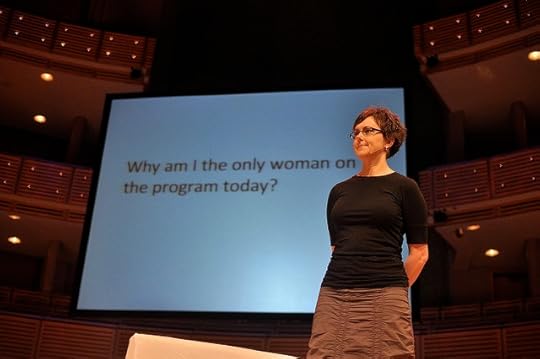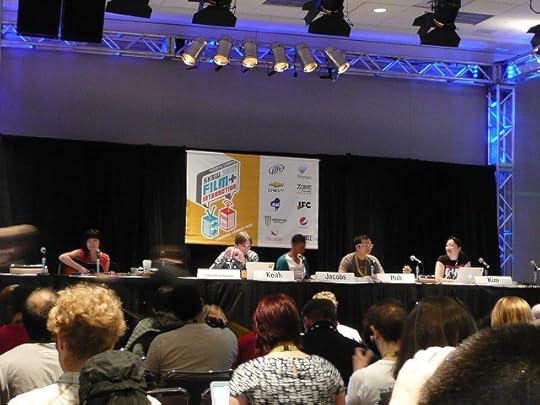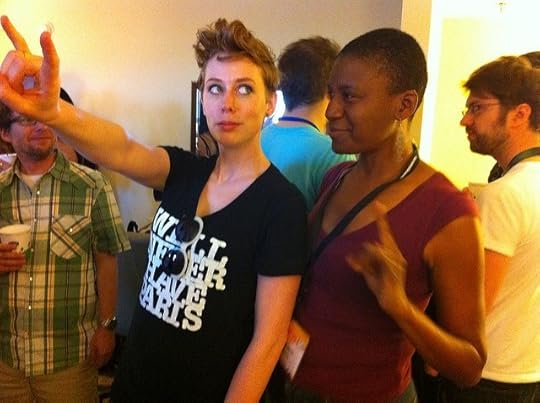Denise R. Jacobs's Blog, page 3
April 14, 2017
My book “Banish Your Inner Critic” is available for pre-sale! Let’s make it a success together!
Sourced from Denise Jacobs - Speaker + Author + Creativity Evangelist
After a year of writing and two months in production, my book Banish Your Inner Critic is almost here – the publish date is 6 June 2017!
Back when I was writing my first book in 2009, I battled self doubt almost every day. But when I was done writing and designing the book’s website, I reached one of the deepest, most blissful states of creative flow that I have ever been in. Afterwards, I understood why. During those amazing hours my Inner Critic was completely silent.
From that point on, I threw myself into learning about the creative process, and specifically about how to remove the biggest block to creativity: the Inner Critic. However, there was no single comprehensive source on how to effectively silence the Inner Critic.
I wrote Banish Your Inner Critic to be that handbook. In the book, I reveal the different forms of the Inner Critic and how they show up in our lives. I’ve also amassed a wealth of tools and exercises based on neuroscience, psychology, mindfulness – and even improv – to help you to remove these blocks to express your creative genius and to create a new mindframe.
If you’re ready to reclaim your power from that mean voice in your head, this book is for you! Banish Your Inner Critic will provide insight and relief, and will help you do more of the kick-ass work that I know you are capable of.
But don’t just take my word for it. Get a taste of what’s to come, and download a sample chapter!
And then…
Teamwork makes the dream work. If you love the sample chapter and are excited about the book, you can help make Banish Your Inner Critic a success by doing these three things:
1) Buy It!
Order a copy (or several!) of Banish Your Inner Critic from your favorite bookseller:




2) Share It!
Post about Banish Your Inner Critic on social media. Use the hashtag #byeinnercritic, share the website InnerCriticBook.com, and remember to tag me too: @denisejacobs.
You could also feature Banish Your Inner Critic on your blog or in your publication. Contact me if you want to do this, and I’ll set you up.
3) Expand Its Reach!
Here’s how you can help me get the book into the hands of even more people:
Make Banish Your Inner Critic your Book Club read
Ask your favorite bookstore to order Banish Your Inner Critic
Suggest that your local library stock it as well
I don’t know about you, I can’t wait until 6 June!
Document Link: My book “Banish Your Inner Critic” is available for pre-sale! Let’s make it a success together!
April 13, 2017
Why I Wrote Banish Your Inner Critic
Sourced from Denise Jacobs - Keynote Speaker + Author + Creativity Evangelist
Back when I was writing my first book The CSS Detective Guide in 2009, I battled self doubt almost every day. But when I was done writing and designing the book’s website, I reached one of the deepest, most blissful states of creative flow that I have ever been in. Afterwards, I understood why. During […]
Document Link: Why I Wrote Banish Your Inner Critic
May 12, 2016
Hacked By MuhmadEmad
Sourced from Denise Jacobs - Speaker + Author + Creativity Evangelist
HaCkeD by MuhmadEmad
HaCkeD By MuhmadEmad
Long Live to peshmarga

KurDish HaCk3rS WaS Here
kurdlinux007@gmail.com
FUCK ISIS !
Document Link: Hacked By MuhmadEmad
A Publishing Deal for Banish Your Inner Critic!
Sourced from Denise Jacobs - Speaker + Author + Creativity Evangelist
I’ve been busting at the seams: I have great news about my upcoming book Banish Your Inner Critic! On 15 April, I signed a deal with Mango Publishing Group, which is redefining the book business as we know it. I now have a publisher for my book! Woot!
During the initial planning for this book, I was completely gung-ho about self-publishing: it just made so much sense from a timing and logistics standpoint. However, I had serious concerns (read: abject terror) about figuring out the marketing, promotional, and distribution pieces of the book self-publishing puzzle – especially given what seemed like the underwhelming selling performance of my first book 6 years ago.
For months, I’ve been saying I wanted to do this book right, which meant not only for it to be written and designed well, but also for the marketing strategy to be well thought out and properly executed. Can you see how easily my own Inner Critic had a field day and I went into panicked overwhelm trying to think through all of that in addition to writing the book itself? Oy!
Also, I’ll be honest: recovering from last year’s nonstop speaking schedule made it difficult to get into a writing rhythm. For the first two months of the year, all I had the bandwidth for was research (and therapeutic gardening). I finally kicked into gear with the first round of writing a couple of weeks ago – just in time to have to stop for a week-long trip for speaking. Writing a book while running a business is not for the faint of heart, y’all. I marvel at how other people do it!
Now with the Mango partnership, I’ll get the best of all worlds — the artistic freedom of self-publishing; outstanding support in marketing, public relations and distribution; and accountability to a production schedule that will motivate me to hit my writing deadlines.
I’m so glad I trusted my gut. Banish Your Inner Critic is going to get wider exposure than I’d previously envisioned!
Make sure you sign up on the mailing list for the book announcements. For those of you interested in being a beta reader, there’s still time to sign up on the beta reader list.
Even though I’ll be busy writing, do get in touch if you’d like me to keynote or conduct a workshop this summer!
Document Link: A Publishing Deal for Banish Your Inner Critic!
November 12, 2014
Critical Tools for Sustained Success: Creativity and Innovation
Sourced from Denise Jacobs - Speaker + Author + Creativity Evangelist
The landscape of business has changed dramatically over the past several years. For decades, the focus has been on cost control and technology, whereas the current business climate has prompted a paradigm shift. Success for companies in the 21st century is now dependent upon creativity and innovation, both hailed as the most important contributors to the growth of the economy.
Creativity is the ability to develop meaningful new ideas through exercising imagination and originality. Contrary to popular belief, creativity is not relegated to a select few: we are all born creative. However, creativity is like a muscle: it grows stronger with repeated practice and exercise – and weaker with disuse.
Innovation is the practice of making changes to that which is established, using creativity to enhance and improve upon known concepts, practices, or processes. Similar to creativity, an innovation mindset becomes ingrained through building the habit of thinking in certain ways, and is sustained through a supportive environment.
Problems & Solutions
Unfortunately, despite recognizing creativity and innovation as critical tools for sustained success, many companies are slow to adapt to this new environment. At best, the few business leaders who truly understand how critical it is to initiate the shift within their organizations are at a loss at how to start the process. At worst, organizations merely pay lip service to the importance of creative thinking and having an innovation mindset, but do little to support it. These are the companies that encourage people to take risks and be innovative, but then punish them when they make mistakes or their ideas aren’t immediately lucrative.
The sad thing about both of the above scenarios is the supreme waste talent and resources that they produce. Brilliant employees become unmotivated and bored, merely going through the motions of their jobs, and the company’s greatest source of creativity and innovation lay dormant.
The good news is that leveraging the untapped, latent talents of the members of an organization can reverse this downward spiral. Through reigniting your workforce’s creative spark and inspiring innovation at all levels – from the top down and the bottom up – companies will be well on their way to improving employee engagement by helping people feel connected to and passionate about their work and their ability to meaningfully contribute to their company. Therefore, training your employees on creative thinking and innovation skills so that they not only understand the power of creative thinking, but they also have the tools to do so should be a top priority for your organization.
Four Tips for Reigniting Creativity and Inspiring Innovation
Whether you need to instill the creative spirit or revive flagging creative inspiration with the members of your organization, here are four ways to do so:
Help individuals and teams get unblocked creatively. Often, the biggest blocks to creative, innovative thinking come from fears: fear of making a mistake and fear of failure. Further, people often feel creatively stymied when they perceive that there are no proper outlets for sharing ideas: that they’ll be criticized for original thinking, or that their unique concepts will be dismissed.Make it a policy to be more open-minded and to suspend judgement on ideas − especially in the early stages − and particularly with the unusual or seemingly random ideas. Encourage spontaneity and experimentation, and give people the responsibility and freedom to make mistakes.The more comfortable people feel with being able to fail and try again with few repercussions, the more they relax their guard and allow ideas to flow. They will relearn how to trust their creative “gut” and start the process of breaking down their creative blocks.
Advocate and practice effective communication. Creativity and innovation flourish most in groups where there is fantastic communication: the sharing, listening to, and amplification of ideas − not only amongst the team members but with customers as well.Effective communication has two sides: listening and sharing. People with the best ideas are most often those who are adept listeners and so are the best leaders. They are stimulated by the concepts of others and connect the dots in novel ways to create even better ideas. Listening well requires being present, giving people your full attention, and relaxing your own agenda. Doing so allows you to hear the brilliance in others.Almost as important as listening is being able to clearly articulate and share ideas. In fact, companies with highly creative cultures support their employees in idea-selling, because “it’s not about good ideas. It’s about selling those ideas and making them happen,” according to Marketing guru Seth Godin. Learning presenting skills is a great way to give people the tools and the confidence to articulate and sell their concepts, making it easier for their great ideas to gain traction within the team and company.By learning to become excellent listeners and generous sharers, team members will become master communicators who practice a dynamic, responsive, and generous sharing and exchange of ideas.
Champion a culture of creative collaboration. Forget the mythology of the lone genius cranking out innovations from a garage. People coming together to share ideas, compare observations, and brainstorm solutions to complex problems power inspired creativity and sustained innovation. Fostering and harnessing the creative abilities of a group produces a wider range of creative ideas and innovation solutions arising from the range of knowledge, experience, and perspectives of the individuals of the group.One of the best ways to help the people within your teams to create better together is to teach people to amplify the creative ideas of others. Our tendency is to try to find problems with another’s ideas, which brings ideations to a standstill. However, ideas blossom when team members get in the habit of responding to an offered idea not with a “Yes, but…”, but instead with a “Yes, AND…”Encouraging teaching and learning within the team is also powerful. Creating a culture of mentorship facilitates the brain-share of the more experienced members with the more junior, and not only brings up the whole level of the team, but also strengthens connections and trust, fueling strong collaboration down the road. Brand-new members coming into the team should be on-boarded with the innovation mindset of the group, so that they come into their new work environment ready to develop and share their ideas. The trust built by these dynamics binds the team members together in productive collaboration.
Provide the resources to support and execute upon great ideas. It’s one thing to talk the creativity and innovation talk, but to actually walk that talk, the very necessary resources of time, money, manpower, training/methods, and materials must be available in order to support the workforce implementing their creative and innovative processes and products.Individuals and teams need the space to generate, develop, and experiment on ideas. Because of this, one of the most critical resources that encourage and support creativity and innovation is time. The best example of this is Google’s 20% time, which has created some of the most successful Google products.But time is not enough. Make sure there is budget for taking great ideas to the next level. Ensure that your initiative to cultivate creativity and spur innovation is strengthened by trainings and medium to long-term programs. Doing so will help build teams that are synergistic and can produce well together when it’s time to start moving their grand ideas to market.
Well-Worth the Effort
Once you get on-board with promoting creativity and innovation within your organization, you’ll wonder why you didn’t do it sooner. Even in the short-term, you’ll begin to see benefits such as improved teamwork and team cohesion, better employee engagement and productivity, increased attraction and retention of talented employees, and enhanced problem-solving and interaction.
By providing the resources that sustain and grow an enduring culture of creativity and innovation, you’ll make it safe for people in your organization to bust through their creative blocks in order to grow their ideas and experiment with them, generously listen to and share ideas, and creatively collaborate to generate innovative solutions as a team. The companies that prevail in upcoming years will boast both a creative and innovative leadership and workforce that, in tandem, will skyrocket the success of the company’s products and services.
So, are you ready to make a commitment to igniting creativity and inspiring innovation within your organization? Make the effort, and you’ll see how you can transform how you and your team work… for the better.
This article originally appeared in NDC Magazine and has been reprinted with permission.
Document Link: Critical Tools for Sustained Success: Creativity and Innovation
May 6, 2014
Hacking the Creative Mind on Scott Hanselman’s Hanselminutes Podcast
Sourced from Denise Jacobs - Speaker + Author + Creativity Evangelist
While speaking at the AngleBrackets Conference in Orlando a couple of weeks ago, I had the great fortune of finally getting a chance of sitting down for a chat about creativity with my awesome and wonderful friend Scott Hanselman for his podcast, Hanselminutes: Fresh Air for Developers.
During our conversation, we talked about a number of things including creativity for developers, ways kick-start your creativity if you don’t feel like you have the time, space, or brain bandwidth for it (or as Scott coined it, the “couch to 5k” for creativity); ways to leverage downtime and recharge time to have it help feed your creative mind, and a whole lot more.
Have listen to the podcast: Hacking the Creative Mind, and please share the ways you feed and spark your creativity!
Document Link: Hacking the Creative Mind on Scott Hanselman’s Hanselminutes Podcast
May 1, 2014
Sparking a Contagion of Awesome with Rawk The Web
Sourced from Denise Jacobs - Speaker + Author + Creativity Evangelist
Since 2010, I’ve spoken at a lot of tech conferences, and all shared a particular quality: a lack of diversity in both speakers and attendees. Thus, one of my passion projects has been this: promoting positive change by increasing the pool of female and tech experts of color. I’m all about spreading conceptual contagions. Let me tell you how this one got started.
Firestarter
At FOWA Miami 2009, Kristina Halvorson surprised everyone during her presentation on content strategy with a content easter egg by launching a discussion about the lack of women as speakers in the tech industry. Little did I know it at the time, but Kristina’s questioning lit a spark within me.
How to Rawk SXSW
A year later, I found myself speaking on the panel “How to Rawk SXSW”. The fantastic Min Jung Kim invited me to be on the panel with Ben Huh of ICanHasCheezburger (you know those funny cats pictures? You can thank his site for helping your waste time at work), Jeremy Keith of Clearleft, and Annie Lin. Clearly, the panel was quite diverse, and it was great to be a part of it. However, going from panel to panel during the rest of the conference, it began to hit me how unusual the makeup of this panel actually was.
The thought began to formulate then in my mind, growing the initial spark into a flame. It hit me: diverse speakers need rawk more than just SXSW. We need to rawk the whole web and change what people’s mental image of the face of tech. I bought the domain rawktheweb.com (especially because rocktheweb.com was taken) as soon as I came home from the conference.
My feelings were only solidified as I made manifest my dream of becoming a speaker on the “web conference circuit”. One event after another, I would be one of a handful of women and/or people of color — not only as speakers, but in attendance in general — and in every instance (save for one) the only black woman speaker. Yet, over the course of the year, as I met more women and people of color at conferences, I thought, “we exist! Why aren’t there more of us as the experts that everyone knows about?”
As a speaker who was becoming increasingly known in the industry, I realized that I was in the unique position of being the both the messenger and the message, but I knew the change needed to come from a critical mass of people: this wasn’t something to champion by myself. It was clear that I needed to launch an intiative that others could participate in and be a part of as well: a unifying, motivating philosophy that when put into practice shifts mindsets, alters behavior, and precipitates change.
Start. Stop. Repeat.
By the time SXSW 2011 came around, I reached out to all of the women that I knew attending who were speakers and known in the industry. I gathered them together to put forth my idea of starting a movement to help increase the numbers of women as visible tech experts: speakers and authors, specifically. We had a great meeting: we discussed ideas and ways to structure. I remember feeling overwhelmed, but satisfied to get the ball rolling. These fantastic women were in attendance: Cindy Li, Tiffany Brown, Arianne Stiles, Erica Mauter, Hannah Donovan, Tara Hunt, and Jenifer Hanen.
Upon returning home from world of SXSW, however, life happened: I was totally focused working on getting work, selling my car, starting a relationship, doing more and more speaking engagements, and pivoting from being “the CSS gal” to a Creativity Evangelist. The momentum I initiated at SXSW ground to a screeching halt, until I was invited to speak at the inaugural Girl Geek Dinners Miami meeting in July. I thought: “perfect! I’ll do a talk about Rawk the Web!” and thus hustled, put together a presentation, and kicked off the event. Great!
And then…life continued happening, and I had to push RTW to the back burner – again.
Let Your Life Speak
I had grandiose notions of how I was going to grow the RTW website, community, get sponsorship, conduct video interviews — the whole nine yards. However, I just didn’t have the time, financial resources, or mental bandwidth to get it off the ground as planned. But what happened instead was even better: I started truly putting the principles into practice and lived them.
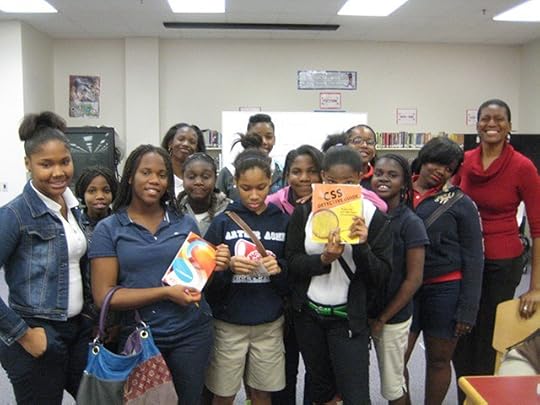
I steadily grew my own visibility and reputation as a speaker. I volunteered to speak to groups of adolescent girls of color at local schools as a Get Real mentor and taught adolescents HTML at CodeFever Miami events. When people reached out to me with questions about speaking, I mentored them and connected them directly with event organizers. I reached out to mentors myself to help me get to the next level, and hired people for consulting jobs. With every action and at every opportunity, I put my own suggested methods to amplify one’s visibility as an industry expert to work and encouraged others to do so as well.
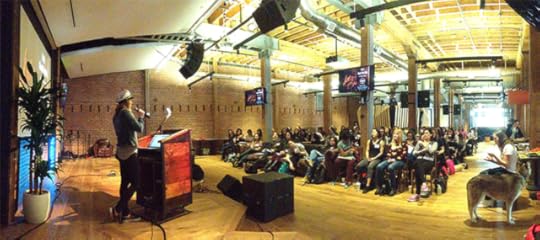
Fast forward to this year. At the beginning of February, I received an email out of the blue inviting me to mentor at GitHub’s Public Speaking Workshop for Women organized by Julie Horvath at the GitHub HQ in San Francisco. During our chat, I shared my ideas on ways to increase the number of diverse speakers. I suggested that I keynote the event (in addition to mentoring), to share these practices with the attendees. Much to my delight, she agreed!
For me, the event wasn’t just wonderful; it was magical. Have you ever had an instance where you felt like everything that you did in your life culminated in that very moment? That’s how it felt to share Rawk the Web at this event: it was the perfect message for that audience – a divine pairing of information and recipient. All of the women who attended were open, eager for the information, and willing to push their boundaries. It was a great honor to be able to share the thoughts, stories, knowledge and insights I’ve gained over the past few years with everyone. After the two keynotes, several mentors gave lightning talks, we worked in small groups, and at the end of the day, all of the attendees — many whom previously had never dreamed of speaking — developed and presented their own short talks.
Sparking a Contagion of Awesome
The magic of the workshop didn’t end there, however: apparently, I carried it with me into the next day. For brunch, I met up my friend Sarah, a kick-ass product manager at Adobe. She asked me about the workshop, but expressed disdain at the idea of all-women events. I shared with her one of the key examples that I was particularly moved by during my talk (almost to tears, actually), which illustrates why I feel events like this matter:
“It’s like Kid President. Until we had a Black president, African-American children didn’t truly know this was a possibility for them — it was just a nice idea that would probably never happen. Now this kid knows that he can be president one day because he sees himself in Obama.
I’m sitting here in front of you now because I saw Molly Holzschlag speaking at WebVisions in Portland in 2005. When I saw that she and I taught the same content – except that I was confined to a classroom and she was speaking all over the world. Through her example, I saw the possibility that I could be doing the same.
This is what we can do for other women and people of color in the tech industry. We can help them see themselves in us. We can show them what’s possible.”
A few hours later, I checked a tweet notification to find that during the course of our conversation, I had flipped Sarah’s perception of women in tech completely upside down.
How cool is that?!
Get Your Rawk On!
So, now, I’ve officially launched Rawk The Web: an initiative and movement to motivate and equip women and people of color to amplify their visibility in order to become regarded tech experts and correspondingly change the face of the tech industry through personal example, online content, and events. My vision is that not only will up-and-coming speakers and authors benefit, but so will conference organizers looking for a source of potential kick-ass diverse speakers.
So, are you with me? Are you ready to RAWK? Let’s do this!
Document Link: Sparking a Contagion of Awesome with Rawk The Web
April 8, 2014
How to write a newsletter in 30 minutes or less
Sourced from Denise Jacobs - Speaker + Author + Creativity Evangelist
This is my year of finally putting many of my big plans and ideas into action. One of my main objectives for years now (four to be exact) has been to send out a newsletter. I had all kinds of reasons why it wasn’t happening: too busy, have to revive old mailing lists, need to somehow get all of the emails from all of the business cards into a database (to my defense, at the beginning of last year, I did send a box of business cards to CloudContacts, but they went under before I made the time to do anything with my list of contacts), need to put an email capture form on my website (finally did that last May), have the design the newsletter to match my website (and my website needed to be updated), etc, etc, blah blah blah. You get the picture. It all added up to a lot of me doing nothing short of moving the task from one to-do list to the next, but never quite making the time to get it done.
Most likely, I could have gone like that for another year, except I received divine intervention in early January in the form of my friend Dr. Anna B. Scott. She pinged me on Google chat to ask a question. I told her about having to do a newsletter and she answered with this:
“what’s the status, and do you have a flow?
i need to get out a newsletter as well.
do you want to do challenge today to have them done?”
The status was that they weren’t done, merely looming as Yet Another Thing To Do. Did I have a flow? Nope, none to speak of. Did I want do a challenge? Absolutely!
Her response:
“in 30 minutes, we will each share a document in Google Docs with a rough draft of our intro to our newsletter, starting…
NOW”
And just like that, it was ON. Because I already had a good idea of how I wanted to structure the newsletter and the content that I wanted to cover, I started writing. And guess what? At the 27 minute mark, I was DONE.
Buoyed by my productivity triumph, I realized that this was a great approach to getting almost anything done — especially stuff that seems like it’s A Big Deal, but which doesn’t have to be.
So, here’s how you write a newsletter in 30 minutes or less:
Sketch out ideas for content ahead of time. Even better, focus the newsletter content around an upcoming event, blog post, article, or something that you want to talk about so that you have a theme (I LOVE themes for writing!). For my newsletter, I wanted to highlight my upcoming event in Zurich at the end of January called Creativity Goes to Work, so I made the content of the newsletter center around creativity and engagement at work.
Commit to writing through a distraction-free 25-30 minute sprint. You can use the Pomodoro Technique or whatever else you want, but the parameters are the same: no phone, no checking email, no social media notifications. If your will isn’t strong enough, you may want to block distracting websites with an app or a browser extension.
Team up with a partner. Find another friend/buddy/colleague who needs to work on something similar or who just needs to bust something out and would like the structure to do so. The accountability is extra incentive to get it done, because rolling up with them having something for you the review and you having nothing would be awkward, to say the least.
Once the seemingly hard work of the initial draft was written, I got the newsletter content into my newsletter app of choice, MailChimp, and then went to work designing the look of the newsletter. Yes, choosing the images, editing, and revamping took more than 30 minutes, but that initial push was the most important step to getting the process started, and most importantly, completed.
And isn’t that really what we need most of the time?
Full disclaimer: This blog post is sponsored by MailChimp
Document Link: How to write a newsletter in 30 minutes or less
March 21, 2014
Named one of Miami’s TechWeek100 Key Influencers
Sourced from Denise Jacobs - Speaker + Author + Creativity Evangelist
This morning, I found that I was named one of Miami’s TechWeek100 this year. The Techweek100 is an exclusive list that celebrates key influencers in South Florida’s tech ecosystem. What an honor!
From the website:
“The Techweek100 identifies South Florida leaders who have a significant impact on business and technology. The Techweek100 includes managers of fast-growing technology companies, prominent investors, key enablers of the digital ecosystem, creators of new technologies, and other innovators that make important contributions to their field. The Techweek100 is not a ranking but rather a list of 100 technology leaders and organizations chosen by the South Florida community and Team Techweek. “
The eMerge Americas TechWeek Conference is coming to the Miami Beach Convention Center in May. I hope to see you there — it looks to be a great event!
Document Link:
February 24, 2014
5 Tools for Increasing Productivity and Gaining Time
Sourced from Denise Jacobs - Speaker + Author + Creativity Evangelist
Over the past month, I’ve been working on automating processes that I’d like to become regular and effortless. Here are some tools that I’ve discovered or been exposed to and have recently put to use:
Asana: Been using this for managing ALL of my tasks, projects, and turning ideas into action. I highly recommend doing a great big brain-dump into it and then prioritizing tasks that way. Also recommend putting all tasks that you have into it to keep track of everything.
Contactually: It pulls in ALL of your contacts from email, and social media networks and consolidates them. Then you can send group mails that look like individual ones, and set up email programs and check-ins with it. Powerful and useful!
If This, Then That (IFTTT): An amazeballs tool that you can use to connect different online services with each other. I just made a recipe for connecting Delicious with Buffer, so that I can save links to Delicious.com whenever I want, but Buffer will then only send out 5 tweets per day. So far, I have tweets for the next 2 weeks lined up. Yay!
Buffer: I’ve known about, but resisted Buffer for about 2 years, but I’m now very happily on board! I now have Tweets and some Facebook posts queued up to post at regular intervals. No more trying to remember to post things in a timely manner. The Buffer Blog is also well worth reading. Sign up for their emails, you’ll be glad you did.
Gmail Offline: I don’t know how I missed the memo on this one, but I’m REALLY glad that I got clued in! I’d been planning to start using Mac Mail so that I could access my email when I am traveling but have no internet access. Luckily, a friend suggested that I use Gmail Offline to do that and skip Mail altogether. I’m looking forward to having a way to get caught up with backed up email responses during long trans-continental and trans-atlantic flights!
Have you found any new tools that are helping you be more productive so that you can devote time to doing the work that you really want to do? If so, please share!
Document Link: 5 Tools for Increasing Productivity and Gaining Time

